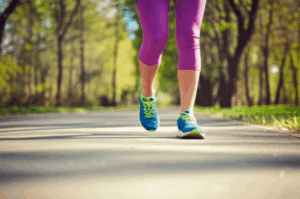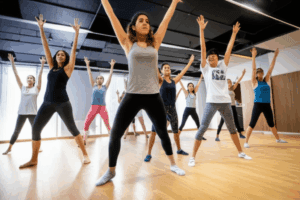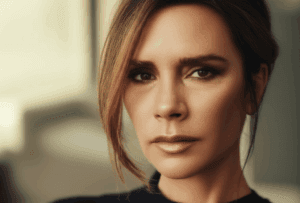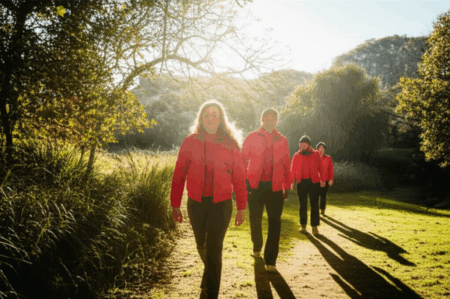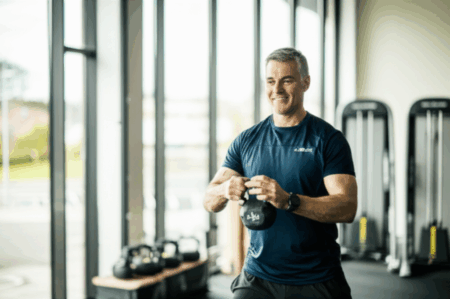It’s a common misconception that bodybuilding is a young person’s game. However, more and more individuals are proving that age is just a number when it comes to building muscle and maintaining a strong, healthy physique. At 63, I’m living proof that you can achieve and sustain a bodybuilding physique, even without competing. This article outlines the exact workout routine, nutritional strategies, and lifestyle adjustments that keep me in shape, providing a comprehensive guide for anyone looking to embark on a similar journey, regardless of age.
Why Bodybuilding After 60?
Before diving into the specifics, let’s address the “why.” Why should someone in their 60s (or beyond) consider bodybuilding? The benefits are numerous and profound:
- Combating Sarcopenia: As we age, we naturally lose muscle mass, a condition called sarcopenia. Bodybuilding helps counteract this, preserving and even increasing muscle mass. Strength training can reverse degenerative muscle loss.
- Improved Bone Density: Weight training strengthens bones, reducing the risk of osteoporosis and fractures.
- Enhanced Physical Function: Building muscle improves balance, coordination, and overall physical function, making daily activities easier and safer. Regular bodybuilding exercises can significantly enhance physical capabilities, leading to a better quality of life and increased independence.
- Reduced Risk of Chronic Diseases: Bodybuilding can help maintain a healthy weight, improve metabolism, and reduce the risk of conditions like diabetes, heart disease, and arthritis.
- Mental Well-being: Exercise releases endorphins, boosting mood and self-esteem. Achieving fitness goals provides a sense of accomplishment and purpose. Regular exercise can alleviate symptoms of anxiety and depression.
- Increased Longevity: A combination of proper nutrition, exercise, and muscle building promotes a healthier and longer life.
The Foundation: A Gradual and Consistent Approach
The key to successful bodybuilding at any age, but especially as we get older, is to start gradually and remain consistent. Here’s how I approach my training:
Consultation with Professionals: Before starting any new exercise routine, especially at this age, consult with healthcare providers. Consider working with a fitness trainer or physical therapist to design a personalized program tailored to your abilities and goals while ensuring proper form to prevent injuries.
Start Slow: Begin with lighter weights and fewer repetitions to allow your muscles, tendons, and joints to adapt.
Progressive Overload: Gradually increase the intensity, weight, or resistance as your strength improves. The goal is to challenge your body’s abilities, constantly pushing yourself to do better each session.
Listen to Your Body: Pay attention to any pain or discomfort and adjust your routine accordingly. Don’t push through pain; instead, rest and recover.
Consistency is Key: Aim for at least two to three strength training sessions per week, targeting all major muscle groups. Set realistic goals and stick to your training schedule, knowing that results will come with time and persistence.
My Weekly Workout Routine
My workout routine is structured to maximize muscle growth while minimizing the risk of injury. I focus on compound exercises that work multiple muscle groups simultaneously, followed by isolation exercises to target specific areas. Here’s a typical week:
Monday: Chest and Triceps
- Warm-up: 10 minutes of light cardio, such as walking on a treadmill or using an elliptical machine, followed by dynamic stretching.
- Bench Press: 3 sets of 8-12 reps.
- Incline Dumbbell Press: 3 sets of 8-12 reps.
- Decline Dumbbell Press: 3 sets of 10 reps.
- Dumbbell Flies: 3 sets of 12-15 reps.
- Triceps Pushdowns: 4 sets of 20 reps.
- Overhead Triceps Extensions: 3 sets of 10-12 reps.
- Triceps Kickbacks: 2 sets of 10-12 reps
- Cool-down: 10 minutes of static stretching, holding each stretch for 30-60 seconds.
Tuesday: Back and Biceps
- Warm-up: 10 minutes of light cardio and dynamic stretching.
- Pull-ups: 3 sets to failure (or assisted pull-ups if needed).
- Barbell Rows: 3 sets of 8-12 reps.
- Seated Rows: 3 sets of 10 reps.
- Lat Pulldowns: 3 sets of 12-15 reps.
- Standing Bicep Curls: 2 sets of 10-12 reps.
- Seated Concentration Curl: 2 sets of 10-12 reps.
- Hammer Curls: 3 sets of 10-12 reps.
- Cool-down: 10 minutes of static stretching.
Wednesday: Rest or Active Recovery
- Active Recovery: 30-45 minutes of low-intensity activity, such as walking, swimming, or yoga.
- Rest: If feeling fatigued, take a complete rest day.
Thursday: Legs and Shoulders
- Warm-up: 10 minutes of light cardio and dynamic stretching.
- Squats: 5 sets of 5 reps.
- Leg Extensions: 4 sets of 10 reps.
- Seated Leg Curl: 4 sets of 10 reps.
- Leg Press: 3 sets of 12-15 reps.
- Standing Shoulder Press: 3 sets of 10 reps.
- Lateral Dumbbell Raises: 4 sets of 10 reps.
- Front Raises: 3 sets of 12-15 reps.
- Cool-down: 10 minutes of static stretching.
Friday: Arms and Core
- Warm-up: 10 minutes of light cardio and dynamic stretching.
- Barbell Curls: 3 sets of 8-12 reps.
- Close-Grip Bench Press: 3 sets of 8-12 reps.
- Incline Dumbbell Curls: 3 sets of 10-12 reps.
- Overhead Triceps Extension: 3 sets of 10-12 reps.
- Cable Curls: 3 sets of 12-15 reps.
- Cable Pushdowns: 3 sets of 12-15 reps.
- Plank: 3 sets, holding for 30-60 seconds.
- Crunches: 3 sets of 15-20 reps.
- Leg Raises: 3 sets of 15-20 reps.
- Cool-down: 10 minutes of static stretching.
Saturday: Active Recovery
- Active Recovery: 30-45 minutes of low-intensity activity, such as walking, swimming, or cycling.
Sunday: Rest
- Complete Rest: Allow your body to fully recover.
Important Considerations for Exercises:
- Squats: Great for the legs, glutes, and core.
- Push-Ups: If standard push-ups are too challenging, start with wall or knee push-ups.
- Deadlifts: Using a light barbell or dumbbells, this exercise targets the back, legs, and core.
- Standing Shoulder Press: Works the shoulders, triceps, and upper chest.
- Seated Row: A fantastic exercise for the back and biceps.
- Balancing exercises: Stand on one leg or perform heel-to-toe walking to improve your balance and core strength. Use a chair, counter or wall for support if needed.
- Chair squats: Begin by sitting in a chair and standing up while extending your arms forward. You can use the chair for support and adjust the depth of your squat based on your personal comfort and ability.
- Resistance band pulls: Put a resistance band around a fixed point, such as around your foot or in each hand, and pull the band to engage your arm and back muscles.
Nutrition: Fueling the Machine
Nutrition is just as important as exercise when it comes to bodybuilding. As a 63-year-old, my nutritional needs are slightly different than those of a younger person. Here’s what I focus on:
- Protein Intake: Adequate protein is crucial for muscle repair and growth. Aim for 1.2 to 2.0 grams of protein per kilogram of body weight per day.
- Lean Meats: Chicken, turkey, and lean cuts of beef are excellent sources of high-quality protein.
- Fatty Fish: Salmon and tuna provide protein and beneficial omega-3 fatty acids, which help reduce inflammation and support muscle function.
- Dairy Products: Greek yogurt, cottage cheese, and milk offer protein and calcium, important for bone health.
- Eggs: A complete protein source, containing all the amino acids required for muscle building.
- Legumes: Lentils, chickpeas, and beans are fantastic plant-based protein sources.
- Tofu and Tempeh: Rich in protein and can be incorporated into a variety of meals.
- Complex Carbohydrates: Whole grains provide the energy needed for physical activities and fitness programs.
- Quinoa, Brown Rice, Oatmeal, and Whole Wheat Bread: These grains also contain fiber, which aids in digestion and helps maintain a healthy weight.
- Healthy Fats: Essential for overall health and provide long-lasting energy.
- Avocados, Nuts, Seeds, and Olive Oil: Support heart health and provide sustained energy.
- Fruits and Vegetables: Packed with vitamins and minerals that support muscle function and overall health.
- Leafy Greens: Spinach, kale, and Swiss chard are rich in vitamins A, C, and K, as well as minerals like iron and calcium.
- Berries, Oranges, and Other Fruits: Provide antioxidants that help reduce inflammation and support recovery after exercise.
- Hydration: Drink plenty of water throughout the day, especially before, during, and after workouts. Dehydration can impair performance and recovery.
- Prioritize Nutrient-Dense Foods: Lean proteins, healthy fats, and complex carbohydrates, while staying hydrated to support muscle repair and overall well-being.
- Easy-to-Consume High-Protein Foods:
- Eggs: Provide about 6-7 grams of high-quality protein.
- Greek Yogurt: Higher in protein than regular yogurt.
- Beans: Versatile and rich in protein.
- Nut Butters: Peanut butter contains about 8 grams of protein per serving.
- Protein Powders: Mixed into smoothies for those struggling with solid foods.
Lifestyle Adjustments: Rest, Recovery, and Mindset
Bodybuilding is more than just workouts and diet; it’s a lifestyle. Here are some key adjustments I’ve made:
- Prioritize Sleep: Aim for 7-9 hours of quality sleep per night. Sleep is crucial for muscle recovery and overall health.
- Manage Stress: Chronic stress can hinder muscle growth and overall well-being. Practice stress-reducing techniques such as meditation, yoga, or spending time in nature.
- Stay Active: Incorporate low-intensity activities into your daily routine, such as walking, gardening, or playing with grandchildren.
- Be Patient: Building muscle takes time, especially as we age. Don’t get discouraged by slow progress; focus on consistency and celebrate small victories.
- Rest and Recovery:
- Older adults require longer recovery times.
- Incorporate rest days and low-intensity activities.
- Prioritize quality sleep.
- Community and Support: Join supportive communities.
Supplements: A Helping Hand?
While a healthy diet should be the foundation of your nutrition, certain supplements can provide additional support:
- Protein Powder: Whey, casein, or plant-based protein powders can help you meet your daily protein goals, especially after workouts.
- Creatine: Can improve muscle strength and exercise performance.
- Vitamin D: Important for bone health and muscle function.
- Omega-3 Fatty Acids: Can help reduce inflammation and support overall health.
- Multivitamin: Ensures you’re getting all the necessary vitamins and minerals.
Note: Always consult with a healthcare professional before taking any new supplements.
Overcoming Challenges: Injuries and Setbacks
Inevitably, there will be challenges along the way. Injuries and setbacks are a part of any fitness journey, but they can be especially daunting as we age. Here’s how I handle them:
- Proper Warm-up and Cool-down: Always warm up before each workout and cool down afterward to reduce the risk of injury.
- Proper Form: Focus on maintaining proper form during all exercises to avoid strain and injury.
- Listen to Your Body: Don’t push through pain. If you experience any discomfort, stop the exercise and rest.
- Seek Professional Help: If you sustain an injury, consult with a doctor or physical therapist for proper diagnosis and treatment.
- Modify Your Routine: Adjust your routine to accommodate any limitations caused by injuries. Focus on exercises you can do safely and gradually increase the intensity as you recover.
- Stay Positive: Don’t let setbacks discourage you. Stay focused on your goals and celebrate small victories along the way.
Final Thoughts: It’s Never Too Late
Bodybuilding at 63 (or any age beyond 60) is not about chasing an unattainable ideal; it’s about enhancing your quality of life, improving your physical and mental well-being, and proving that age is truly just a number. With a gradual and consistent approach to training, a focus on proper nutrition, and a commitment to a healthy lifestyle, you can achieve and sustain a bodybuilding physique, regardless of your age or previous experience. Remember, it’s never too late to start. Embrace the journey, celebrate your progress, and enjoy the many benefits of a strong, healthy body.

